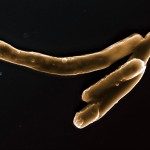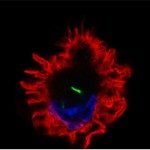Lien vers Pubmed [PMID] – 24482540
Genome Res. 2014 May;24(5):850-9
MicroRNAs (miRNAs) are critical regulators of gene expression, and their role in a wide variety of biological processes, including host antimicrobial defense, is increasingly well described. Consistent with their diverse functional effects, miRNA expression is highly context dependent and shows marked changes upon cellular activation. However, the genetic control of miRNA expression in response to external stimuli and the impact of such perturbations on miRNA-mediated regulatory networks at the population level remain to be determined. Here we assessed changes in miRNA expression upon Mycobacterium tuberculosis infection and mapped expression quantitative trait loci (eQTL) in dendritic cells from a panel of healthy individuals. Genome-wide expression profiling revealed that ∼40% of miRNAs are differentially expressed upon infection. We find that the expression of 3% of miRNAs is controlled by proximate genetic factors, which are enriched in a promoter-specific histone modification associated with active transcription. Notably, we identify two infection-specific response eQTLs, for miR-326 and miR-1260, providing an initial assessment of the impact of genotype-environment interactions on miRNA molecular phenotypes. Furthermore, we show that infection coincides with a marked remodeling of the genome-wide relationships between miRNA and mRNA expression levels. This observation, supplemented by experimental data using the model of miR-29a, sheds light on the role of a set of miRNAs in cellular responses to infection. Collectively, this study increases our understanding of the genetic architecture of miRNA expression in response to infection, and highlights the wide-reaching impact of altering miRNA expression on the transcriptional landscape of a cell.







